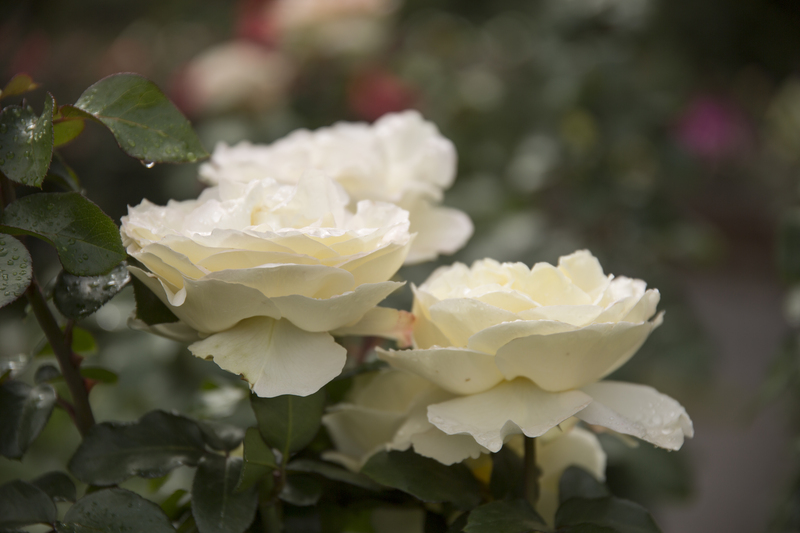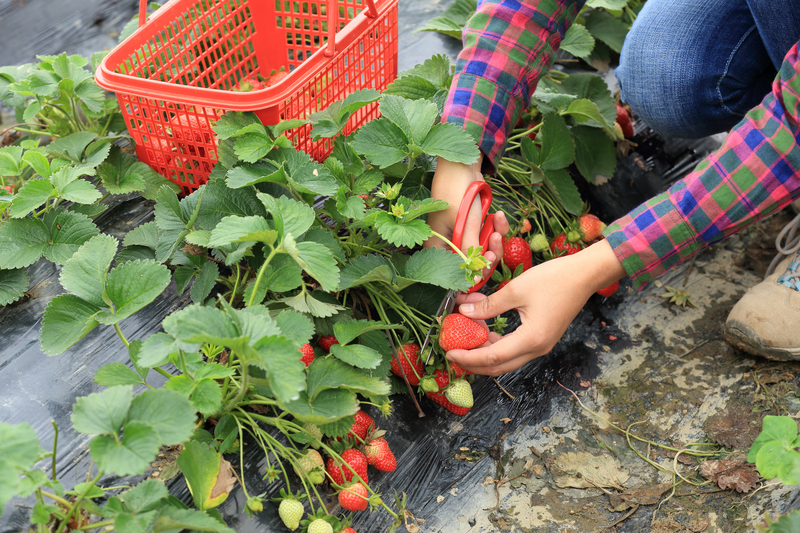The Ultimate Guide to Winter Plant Protection
Posted on 09/09/2025
The Ultimate Guide to Winter Plant Protection
Winter can be a challenging time for gardeners and plant lovers. Protecting your plants from the harsh elements, freezing temperatures, and fluctuating weather is essential to ensure they thrive come spring. Whether you're a seasoned horticulturist or a beginner, this comprehensive guide will provide you with all the knowledge you need on winter plant protection. Learn how to prepare your garden, protect your beloved plants, and ensure a flourishing landscape all year round!
Why is Winter Plant Protection Essential?
Many plant species thrive in the warmth and sunlight of spring and summer but are vulnerable to the frigid conditions of winter. Winter plant protection shields plants from:
- Frost and freeze damage
- Dehydration due to wind and dry soil
- Soil heaving
- Wildlife feeding on exposed vegetation
- Salt injury from road or sidewalk de-icing
Proactively protecting your plants can make a significant difference in their survival, reducing replacement costs and ensuring a vibrant garden year after year.

How to Prepare Your Garden for Winter
1. Clean Up and Remove Debris
Start by clearing fallen leaves, dead plants, and any garden debris. This helps reduce pests and diseases that can overwinter in decaying material. Maintaining garden hygiene is the first step toward plant safety in winter.
2. Mulching for Plant Insulation
Mulching is one of the most effective ways to offer winter protection for plants. A thick layer of mulch conserves soil moisture, regulates temperature, and prevents soil from freezing and thawing cycles (which can heave plants out of the ground).
- Use organic mulches like straw, bark, pine needles, or shredded leaves.
- Apply 2-4 inches around the root zone once the ground has cooled but before it freezes.
- Avoid piling mulch directly against stems or trunks to prevent rot.
3. Watering Before the Freeze
Well-hydrated plants are less susceptible to winter damage. Water thoroughly before the ground freezes, especially for evergreens and newly planted specimens. Moist soil retains heat better than dry soil, offering better cold protection.
Choosing the Best Methods for Protecting Plants in Winter
Protection for Perennials
- Cut perennials back only after they have gone dormant.
- Leave some stems and seed heads for wildlife and added protection.
- Mulch deeply to prevent roots from freezing.
Insulating Shrubs and Small Trees
Young shrubs and trees are particularly vulnerable in their early years. To shield them from cold winter stress:
- Wrap trunks with burlap or tree wrap to prevent sunscald and frost cracks.
- Use windbreaks made from burlap or snow fencing on the windward side.
- Apply mulch or compost around the root zone, extending beyond the canopy drip line.
Evergreen Plant Protection
Evergreens lose water through their needles or leaves year-round, even in winter. Protect them from winter burn by:
- Watering in the fall, especially before the first freeze.
- Applying anti-desiccant sprays to leaves or needles for extra protection.
- Creating windbreaks using burlap or other breathable materials.
Protecting Container Plants
Container-grown plants are more prone to freeze damage since their roots are above ground and exposed to extremes:
- Move pots to sheltered locations (garages, sheds, or against warm walls).
- Cluster pots together for mutual insulation.
- Wrap containers with bubble wrap, burlap, or blankets for extra warmth.
Covering and Wrapping: How and When
The Importance of Coverings
During sudden cold snaps or when tender plants need extra protection, using covers can be a lifesaver. Common covers for winter plant protection include:
- Frost cloths and floating row covers
- Old bed sheets or blankets (for short-term use)
- Burlap sacks over shrubs or small trees
- Plastic sheets (ensure they don't touch foliage)
Always remove covers during the day if temperatures warm up, as overheating can occur even during winter sunlight.
How to Wrap Sensitive Plants
- Wrap larger plants like roses and young trees with burlap, leaving gaps for air circulation.
- Tie evergreen branches loosely with twine to prevent breakage under heavy snow.
- Never use non-breathable plastics directly on plants, as they trap moisture and promote rot.
Common Winter Plant Threats and How to Prevent Them
Frost and Freeze Damage
Frost and freeze damage is a major concern for garden plants. Constructing simple frames or using cold frames and cloches over delicate plants offers an additional layer of winter defense.
Winter Sunscald
Sunscald occurs when intense sun on cold winter days rapidly thaws the bark, which may refreeze rapidly at night. This can crack or kill branches, especially on young trees. Using tree wraps or white latex paint diluted with water on trunks can reflect sunlight and moderate temperature swings.
Animal Damage
- Rabbits, deer, and rodents often feed on bark, twigs, or roots in winter.
- Install wire mesh or hardware cloth around trunks and root zones.
- Apply safe animal repellents or use physical barriers to deter chewing.
Road Salt Injury
Plants near driveways or roads are at risk from salt spray and runoff.
- Build barriers using burlap or plastic to shield sensitive plants.
- Use gypsum or lime in soil near affected areas to neutralize salt.
- Water thoroughly in early spring to flush salt from the root zone.
Specialized Equipment and Tools for Winter Plant Care
- Frost blankets and plant covers
- Mulch and compost supplies
- Tree wraps and trunk protectors
- Pruning shears (for late autumn pruning)
- Anti-desiccant sprays
- Snow shovels for careful removal from branches
Winter Plant Care for Different Plant Types
Winter Protection for Vegetable Gardens
If you have a vegetable patch, some crops (like kale, spinach, and carrots) can survive light frosts. For better yields and winter plant survival:
- Use cold frames, row covers, or mini-hoop houses.
- Harvest root crops and store in damp sand or sawdust indoors.
- Mulch beds to insulate soil and dormant roots.
Caring for Indoor and Houseplants
Though not exposed to outdoor elements, houseplants need special attention in winter:
- Reduce watering frequency as growth slows.
- Move plants away from drafts and cold windows.
- Wipe leaves to maximize available light and prevent pests.
- Avoid fertilizing until spring growth resumes.
Herbaceous Perennials and Bulbs
- Leave foliage to die back naturally for continued nourishment.
- Cover bulb beds with straw or evergreen boughs after the ground freezes.
- Dig and store tender bulbs (like dahlias and cannas) in a frost-free spot.
Pro Tips for Ultimate Winter Plant Protection
- Plan ahead: Select plant varieties suitable for your hardiness zone for better winter resilience.
- Keep detailed records of what survived and what didn't; adjust protection methods as needed.
- Inspect protection measures after heavy snow or ice events and correct as needed.
- Remove heavy snow from branches gently with a broom to prevent breakage.
- Order supplies (mulch, wraps, covers) in autumn to avoid shortages.

Frequently Asked Questions About Winter Plant Protection
When Should I Start Preparing My Plants for Winter?
Begin preparations in late autumn, when temperatures drop consistently and plants start to enter dormancy. This timing maximizes the effectiveness of winter plant protection strategies.
Can All Plants Survive a Harsh Winter?
No. Some plant species simply aren't hardy enough for extremely cold climates. Consider overwintering tender plants indoors or in greenhouses if you want to keep them year after year.
Do I Need to Remove Mulch in Spring?
Yes, once soil thaws and temperatures stabilize, gradually remove excess mulch to prevent root rot and allow new growth to emerge.
Is Plastic or Fabric Better for Covering Plants?
Breathable fabrics, such as burlap or frost cloth, are generally better as they prevent excess moisture buildup. Use plastic only for short periods, ensuring it is securely anchored and does not touch the foliage.
Conclusion: Secure Your Winter Garden Success
Winter plant protection is crucial for maintaining a healthy, thriving garden. By following the best practices--such as mulching, proper watering, covering, and using barriers--you can keep your plants robust throughout the coldest months. Take the time this season to protect your investments, and you'll be rewarded with beautiful blooms and bountiful harvests come spring!
For more in-depth tips and regional guidance, consult your local extension office or horticultural society. Your commitment to winter plant protection will ensure a garden full of life, year after year.

